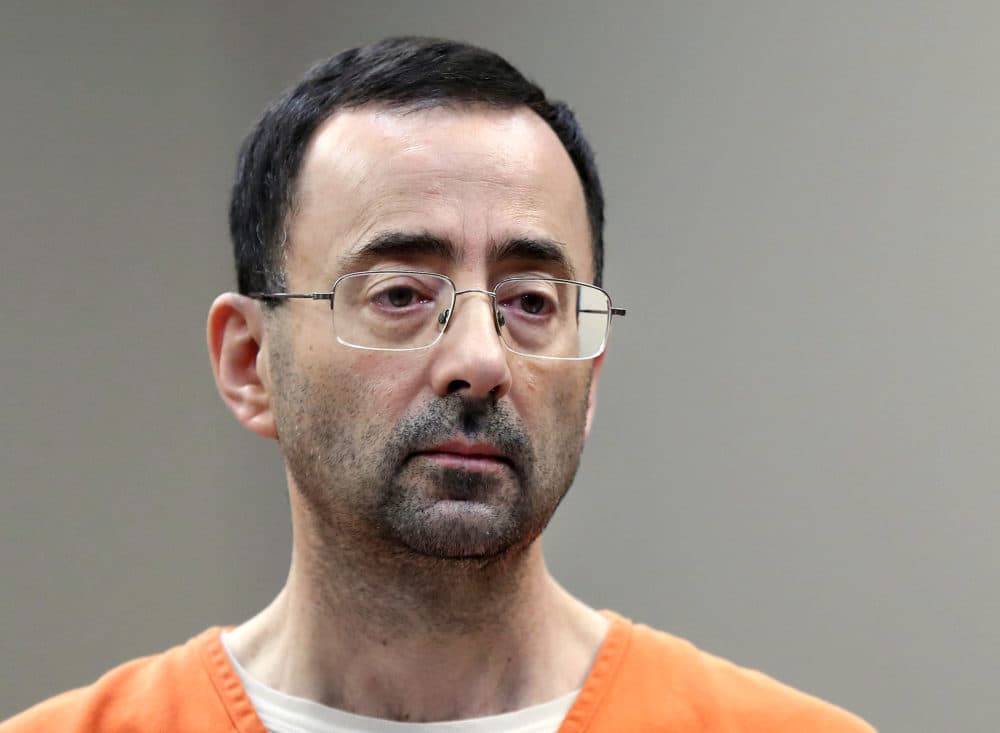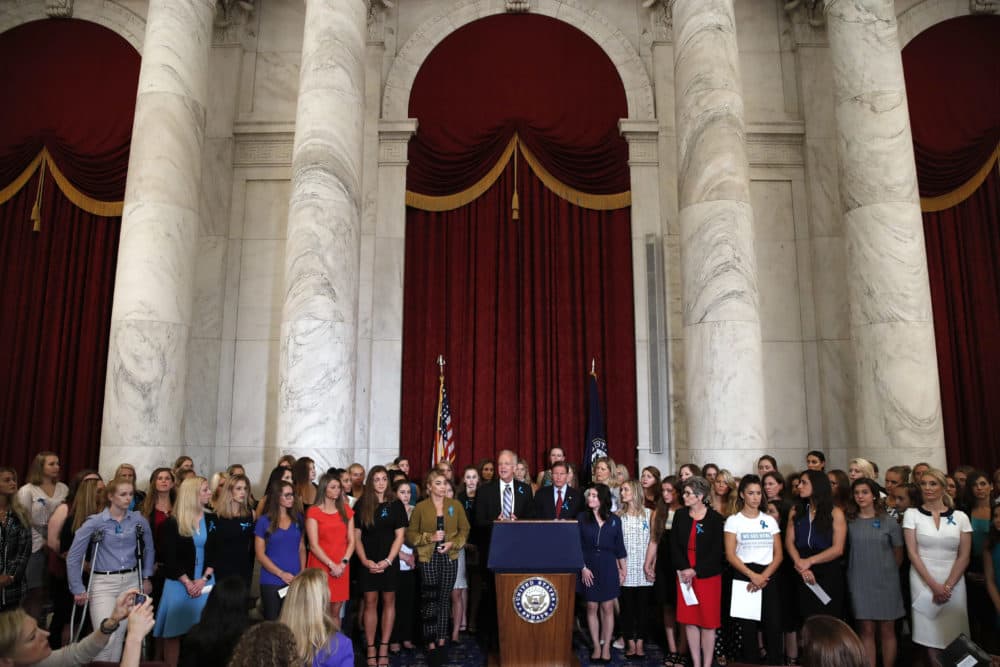Advertisement
Commentary
Words I'll Never Say Again: 'It's OK, The Doctor Is Allowed'

The news that USA Gymnastics is declaring bankruptcy deals yet another blow to the survivors of Dr. Larry Nassar's abuse, whose court cases are now indefinitely on hold. Three-hundred and fifty plaintiffs will not have their day in court and will not recoup damages. While none of us can reverse the damage that has been done to these young girls, as a pediatrician I can do something to protect the next generation. I can find new words to teach my patients about their genital exams.
As pediatricians we examine the genitalia at every well visit from birth through age 19. We do this to identify anatomic abnormalities, check for rashes, screen for cancer and ensure normal progression of puberty. Starting between the ages of 6 and 8, my patients grow wary of the exam. This is for good reason. Their parents have taught them, often at my suggestion, that “no one can touch you down there.”
There was a time I could reassure my patients by saying “It’s OK, the doctor is allowed.” But now I imagine Dr. Nassar saying exactly these words as he poked and prodded girls’ bodies in places he never belonged.
The prevalence of childhood sexual abuse by healthcare providers is unknown. Multiple studies have examined the abuse of adult women by providers, but similar information for children is scarce. One study, published in the Journal of the American Medical Association(JAMA), showed that pediatricians make up 2.9 percent of physicians who are disciplined for sex-related offenses. Given the challenges of underreporting as well as the difficulties in substantiating these acts, the true incidence is likely much higher.
It requires multiple, systemic failures for a physician like Dr. Nassar to continue molesting hundreds of his young patients over so many decades. Thankfully, many of these failures are being addressed legislatively. In January 2018, Congress enacted legislation requiring athletic organizations to swiftly report sexual abuse and implement preventive policies. Two months later, the state of Michigan enacted a sweeping sexual assault prevention bill. And in Pennsylvania, where I practice pediatrics, an updated child protective services bill mandates physicians to have stringent background checks and biannual child abuse training.
These regulations are crucial to early identification of childhood sexual abuse in the healthcare setting. But they are not enough.
Our patients need to know the rules in order to recognize immediately when a provider is breaking them.
What is more difficult to legislate against — and what was foundational to Dr. Nassar's crimes — is that child molesters are adept at earning the trust of their young victims. The podcast Believed, from Michigan Radio and NPR, presents in heartbreaking detail all the ways Larry Nassar groomed his young victims. He earned their respect with his expertise. He won their affection with gifts and attention. He was part of their families. He exuded confidence. When he said “it’s OK, the doctor is allowed,” his patients believed him. Any child would.
If we are to protect our patients from the next Dr. Nassar — and there will be a next Dr. Nassar — we need to remove these words from our lexicon. The burden is on us, as pediatricians. We need to instill in our patients a healthy degree of questioning. We need to stop teaching them to trust us just because we say so.
But what can we teach them instead?
Instead of blind trust, I’ve tried teaching my patients that the exam “should never make you uncomfortable.” But how many of us were comfortable when our pediatricians checked us "down there?"
I’ve tried teaching that the exam should “never cause pain.” But sometimes a degree of pain is unavoidable.
I’ve tried teaching that the exam is “only OK if the doctor’s purpose is to take care of you.” But these were the precise words Dr. Nassar used to penetrate young girls for his own sexual pleasure under the guise of medical treatment.

The answer does not lie in simple catch phrases. If we are to teach our patients to recognize those among us who mean them harm, we need to arm them with a deeper understanding of what is standard of care and what is not. Most people understand that a police officer should read the Miranda rights and a cable repairman should wear a badge. But few people understand that doctors are mandated to follow specific guidelines when exposing the most private parts of patients’ bodies. Our patients need to know the rules in order to recognize immediately when a provider is breaking them.
In 2011, the American Academy of Pediatrics published a policy statement titled “Protecting Children From Sexual Abuse by Healthcare Providers.” This statement clearly delineates the guidelines every physician should follow during the well child visit:
- Health care providers should wear gloves when examining the genitalia of all children starting at school-age.
- Parents should be present during the genital exam of younger children, and adult “chaperones” should be offered as they grow older.
- The exam should be brief and noninvasive; internal genital exams are rarely indicated in girls under 21 years of age.
- Children should remain gowned throughout the exam, in order to expose as little skin as possible.
- When doing a breast exam, health care providers should use the pads of their fingers rather than the palms of their hands.
- Children and families should be taught to report suspicious activity to the administration of the medical facility and, if appropriate, to protective services and law enforcement
I no longer say “It’s OK, the doctor is allowed.” Instead, I explain to my young patients exactly why the exam is an important part of their check-up. I explain what parts of their bodies I will touch and what parts I will not. And then I make a show of asking parents to step closer. I offer a chaperone and put on gloves and cover up skin and keep the exam brief and noninvasive. As they watch me follow each and every one of the rules, even the most hesitant patients understand I am doing no harm.
I want my young patients to trust me — but not because of the letters after my name. I want them to trust me because they know I am following the rules. And I need them to recognize when someone else is not. This will be their greatest defense of all.
